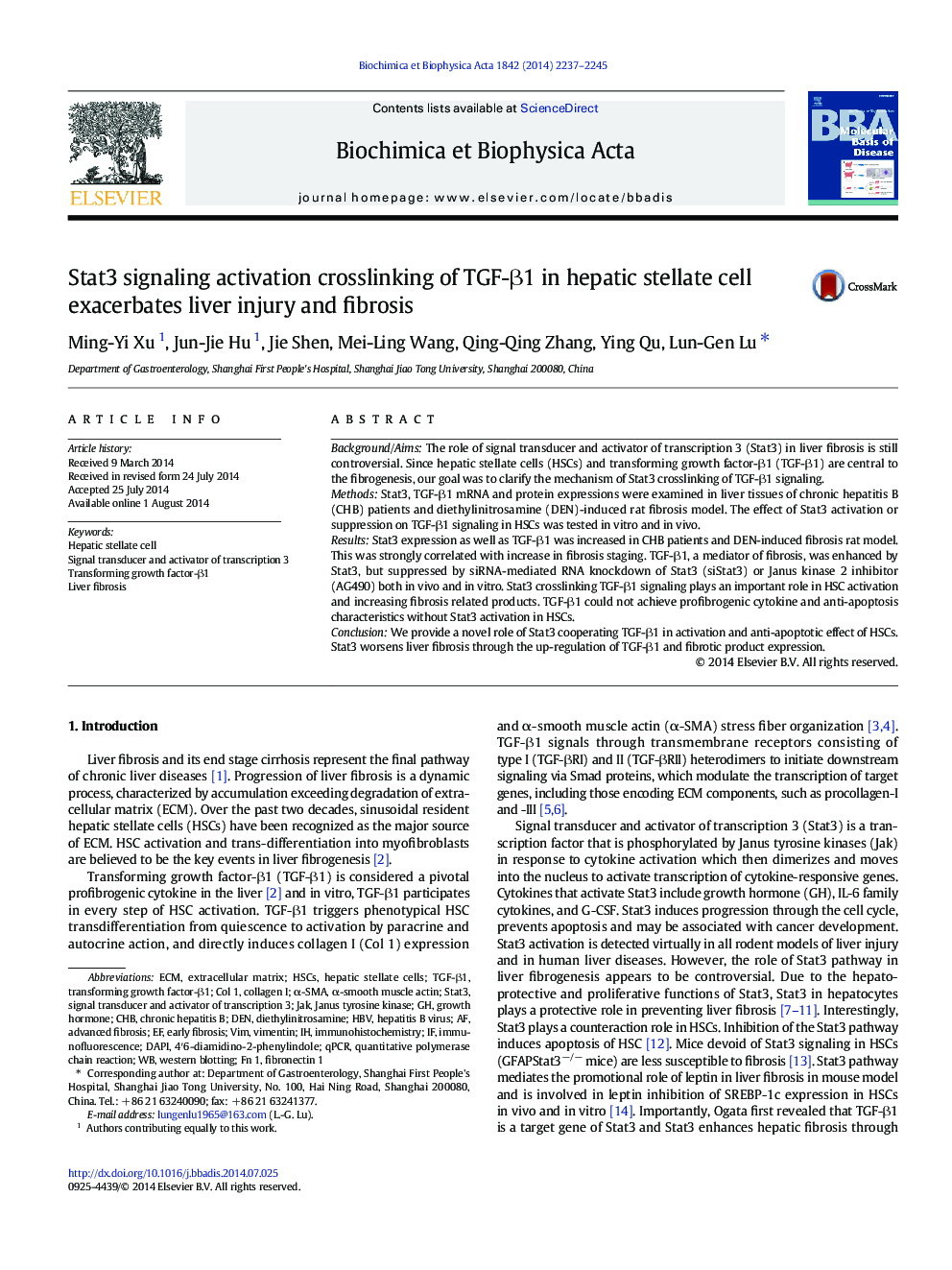| Article ID | Journal | Published Year | Pages | File Type |
|---|---|---|---|---|
| 1904730 | Biochimica et Biophysica Acta (BBA) - Molecular Basis of Disease | 2014 | 9 Pages |
•Stat3 and TGF-β1 expression is identified in fibrotic hepatic tissues.•TGF-β1 is activated by IL-6/Stat3 in vivo and in vitro.•Stat3 crosslinking TGF-β1 facilitates HSC activation and aggravates fibrogenesis.•TGF-β1 could not achieve anti-apoptosis function without Stat3 activation in HSC.•Suppression Stat3 can reverse liver fibrosis in rats treated with DEN.
Background/AimsThe role of signal transducer and activator of transcription 3 (Stat3) in liver fibrosis is still controversial. Since hepatic stellate cells (HSCs) and transforming growth factor-β1 (TGF-β1) are central to the fibrogenesis, our goal was to clarify the mechanism of Stat3 crosslinking of TGF-β1 signaling.MethodsStat3, TGF-β1 mRNA and protein expressions were examined in liver tissues of chronic hepatitis B (CHB) patients and diethylinitrosamine (DEN)-induced rat fibrosis model. The effect of Stat3 activation or suppression on TGF-β1 signaling in HSCs was tested in vitro and in vivo.ResultsStat3 expression as well as TGF-β1 was increased in CHB patients and DEN-induced fibrosis rat model. This was strongly correlated with increase in fibrosis staging. TGF-β1, a mediator of fibrosis, was enhanced by Stat3, but suppressed by siRNA-mediated RNA knockdown of Stat3 (siStat3) or Janus kinase 2 inhibitor (AG490) both in vivo and in vitro. Stat3 crosslinking TGF-β1 signaling plays an important role in HSC activation and increasing fibrosis related products. TGF-β1 could not achieve profibrogenic cytokine and anti-apoptosis characteristics without Stat3 activation in HSCs.ConclusionWe provide a novel role of Stat3 cooperating TGF-β1 in activation and anti-apoptotic effect of HSCs. Stat3 worsens liver fibrosis through the up-regulation of TGF-β1 and fibrotic product expression.
